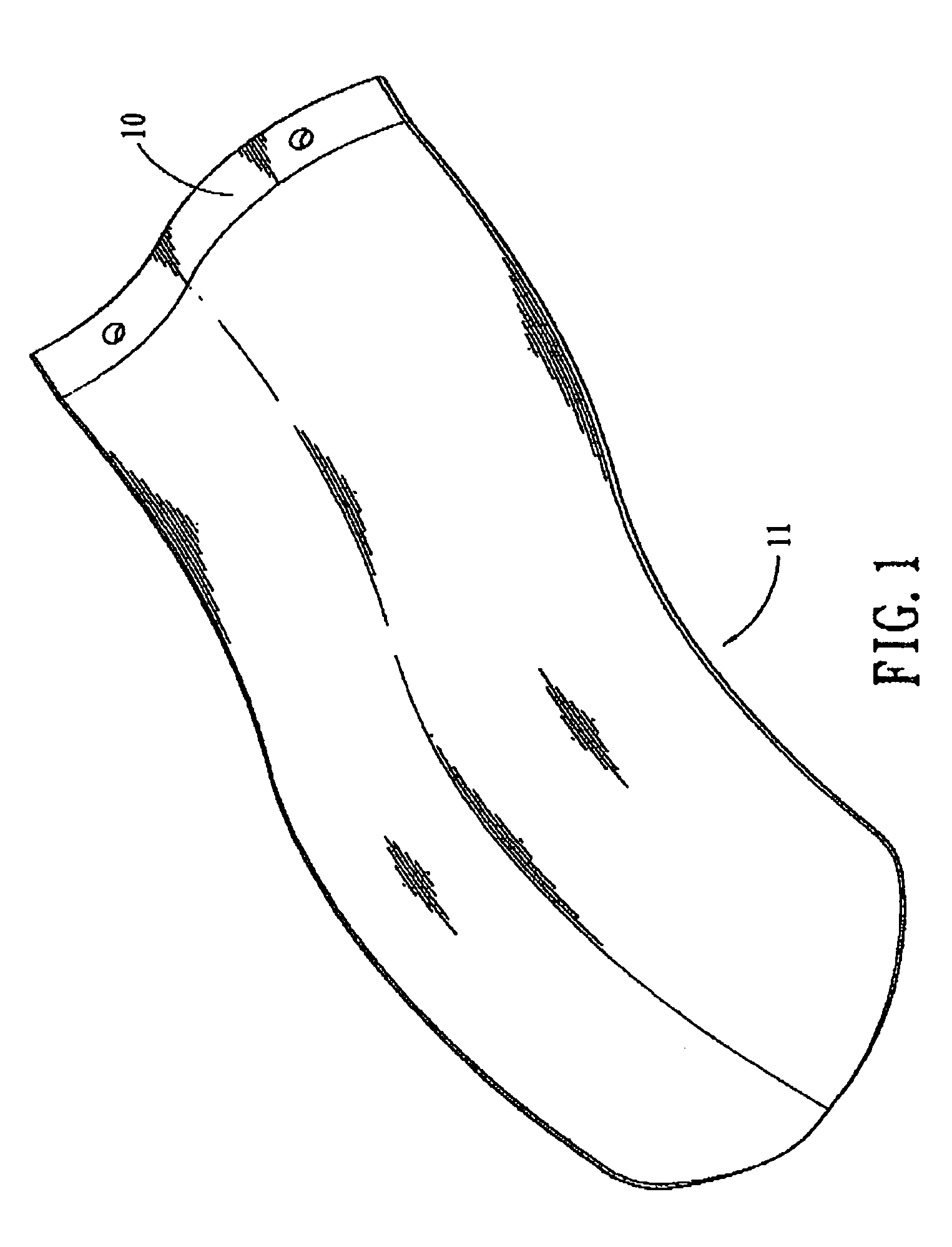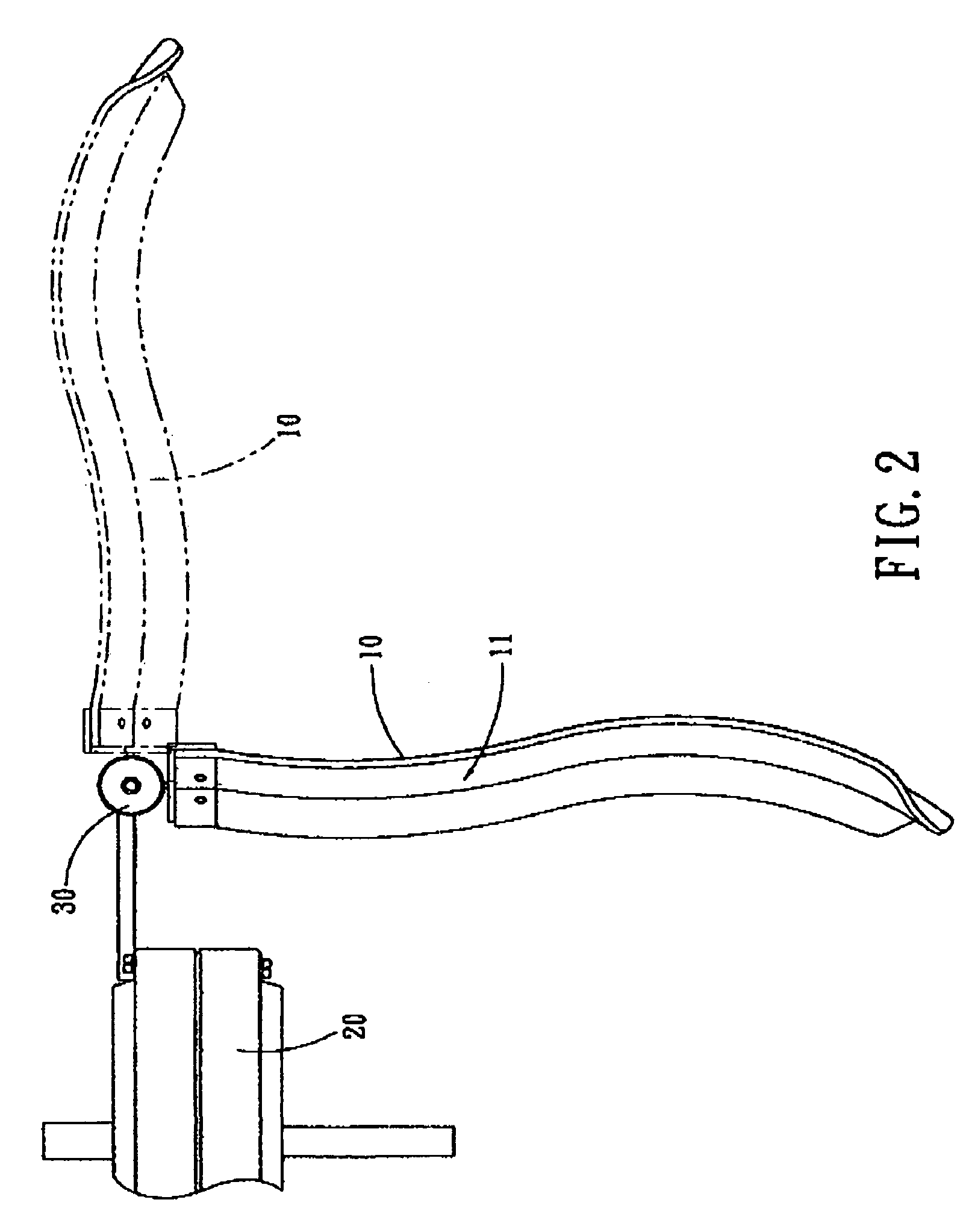Ceiling fan blade
a ceiling fan and blade technology, applied in the field can solve the problems of limited wind that can be produced and the radial arrangement of ceiling fan blades occupying much installation space, so as to achieve the effect of increasing wind pressure and producing more wind
- Summary
- Abstract
- Description
- Claims
- Application Information
AI Technical Summary
Benefits of technology
Problems solved by technology
Method used
Image
Examples
Embodiment Construction
[0019]Referring to FIGS. 1–3, wherein a ceiling fan blade 10 in accordance with the present invention is adapted to be mounted on a lifting mechanism 30 of a motor 20.
[0020]The ceiling fan blade 10 is defined at an upper side of a wind-receiving surface 11 which is parallel to the radial direction with an arc-shaped front wind-receiving surface 111. The front wind-receiving surface 111 forms a tangent angle α with respect to the horizontal line, the tangent angle α is same as that of normal type ceiling fan. Furthermore, next to the front wind receiving surface 111 are sequentially formed a wavy wind guide surface 112 and an arc-shaped rear wind-receiving surface 113 which forms a tangent angle β with respect to the horizontal line. The tangent angle β of the rear wind-receiving surface 113 is greater than the tangent angle α of the front wind-receiving surface 111.
[0021]Referring particularly to FIG. 2, wherein the ceiling fan blade 10 is mounted on the lifting mechanism 30 of the ...
PUM
 Login to View More
Login to View More Abstract
Description
Claims
Application Information
 Login to View More
Login to View More - R&D
- Intellectual Property
- Life Sciences
- Materials
- Tech Scout
- Unparalleled Data Quality
- Higher Quality Content
- 60% Fewer Hallucinations
Browse by: Latest US Patents, China's latest patents, Technical Efficacy Thesaurus, Application Domain, Technology Topic, Popular Technical Reports.
© 2025 PatSnap. All rights reserved.Legal|Privacy policy|Modern Slavery Act Transparency Statement|Sitemap|About US| Contact US: help@patsnap.com



